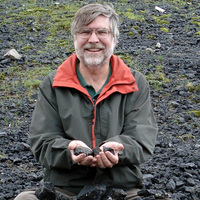HARRY VAN ENCKEVORT, MARK DRIESSEN, ERIK GRAAFSTAL, TOM HAZENBERG, TATIANA IVLEVA AND CAROL VAN DRIEL-MURRAY (EDS), STRATEGY AND STRUCTURES ALONG THE ROMAN FRONTIER, Limes XXV.2, Leiden , 2024
With the fortresses of Legio II Italica in Ločica, Lauriacum (Enns) and Albing we have a rare st... more With the fortresses of Legio II Italica in Ločica, Lauriacum (Enns) and Albing we have a rare stroke of luck in archaeology, namely that the strategy of the generals and emperors, the political and military constraints and ultimately the individual and situational decisions led to the construction of three legionary castra in stone architecture in a relatively short period of about 40 years (170/171-211/217 AD). The ground plan of the fortresses allows us to understand the reasons for the construction of each one. The strategic concepts were then reflected in the sequence of erection of the interior buildings as well as the varying architectural design of the castra. The two stone-built fortresses of Ločica and Albing were never even rudimentarily completed. The one in Lauriacum (Enns) was originally projected as a provisional camp for the advance into Germania libera. It was the only one of Legio II Italica to be completely built and remained in existence until the 5th century AD.











Uploads
Books by Stefan Groh
The Roman protective weapon lorica squamata is the subject of this publication. Based on a solid material base of over 10°000° finds, a new typology and chronology is presented. The focus of the study is on the middle and upper Danube region (Pannonia superior, Noricum, Raetia) as well as the neighbouring Germanic settlement area of the Marcomanni and Quades. The intensive military conflicts during the Marcomannic Wars (166-180 AD) left their traces above all in the Carnuntum region, where one of the largest finds of scale armour in the Roman provinces was documented.
Eine Neuinterpretation der Ereignisgeschichte der legio II Italica sowie militärischer Strategien während der Markomannenkriege (166-180 n. Chr.) sind als Ergebnis hervorzuheben. Zu zeigen ist, dass die ersten, niemals fertig gestellten castra von Ločica eine Spezialeinheit des Kaisers Marcus Aurelius (161-180) beherbergten und als praetentura Italiae et Alpium zu Zeiten der grassierenden „ Antoninischen Pest“ primär die Funktion einer Quarantänestation und eines administrativen Postens an der Bernsteinstraße innehatten.
Bereits kurz nach 171 n. Chr. wurde die legio II Italica nach Lauriacum verlegt und die Errichtung des Legionslagers initiiert. Die Truppe spielte eine wichtige strategische Rolle in den Feldzügen gegen die Germanen. Nach der Proklamation des Septimius Severus (193-211) zum Kaiser ist, als Belohnung für die erwiesene Treue der legio II Italica, im Lager Lauriacum eine Monumentalisierung durch repräsentative Säulenstraßen und principia mit groma-Bau erkennbar.
Bautypologische Charakteristika der Fortifikation und des Stabsgebäudes sowie historische Überlegungen lassen auf den nur in Ansätzen erfolgten Ausbau des dritten Lagers von Albing während der Regierungszeit des Caracalla (211-217) schließen. Im Zuge der Munizipalisierung der Zivilsiedlung von Lauriacum dürfte der Kaiser eine Verlegung des Legionsstandortes jenseits des Flusses Enns nach Albing geplant haben, wo, nach den Vorbildern der Castra Albana bei Rom, ein neues monumentales Lager errichtet werden sollte. Die nach der Ermordung des Kaisers angeordnete Baueinstellung bezeugt die rasche Vergänglichkeit von Macht.
Papers by Stefan Groh
The Roman protective weapon lorica squamata is the subject of this publication. Based on a solid material base of over 10°000° finds, a new typology and chronology is presented. The focus of the study is on the middle and upper Danube region (Pannonia superior, Noricum, Raetia) as well as the neighbouring Germanic settlement area of the Marcomanni and Quades. The intensive military conflicts during the Marcomannic Wars (166-180 AD) left their traces above all in the Carnuntum region, where one of the largest finds of scale armour in the Roman provinces was documented.
Eine Neuinterpretation der Ereignisgeschichte der legio II Italica sowie militärischer Strategien während der Markomannenkriege (166-180 n. Chr.) sind als Ergebnis hervorzuheben. Zu zeigen ist, dass die ersten, niemals fertig gestellten castra von Ločica eine Spezialeinheit des Kaisers Marcus Aurelius (161-180) beherbergten und als praetentura Italiae et Alpium zu Zeiten der grassierenden „ Antoninischen Pest“ primär die Funktion einer Quarantänestation und eines administrativen Postens an der Bernsteinstraße innehatten.
Bereits kurz nach 171 n. Chr. wurde die legio II Italica nach Lauriacum verlegt und die Errichtung des Legionslagers initiiert. Die Truppe spielte eine wichtige strategische Rolle in den Feldzügen gegen die Germanen. Nach der Proklamation des Septimius Severus (193-211) zum Kaiser ist, als Belohnung für die erwiesene Treue der legio II Italica, im Lager Lauriacum eine Monumentalisierung durch repräsentative Säulenstraßen und principia mit groma-Bau erkennbar.
Bautypologische Charakteristika der Fortifikation und des Stabsgebäudes sowie historische Überlegungen lassen auf den nur in Ansätzen erfolgten Ausbau des dritten Lagers von Albing während der Regierungszeit des Caracalla (211-217) schließen. Im Zuge der Munizipalisierung der Zivilsiedlung von Lauriacum dürfte der Kaiser eine Verlegung des Legionsstandortes jenseits des Flusses Enns nach Albing geplant haben, wo, nach den Vorbildern der Castra Albana bei Rom, ein neues monumentales Lager errichtet werden sollte. Die nach der Ermordung des Kaisers angeordnete Baueinstellung bezeugt die rasche Vergänglichkeit von Macht.
LiDAR analyses, geophysical measurements, surveys, and core drillings), important new insights into the morphology
and diachronous development of the Roman colonia were obtained. Particular emphasis was placed on the study of urban fortifications and on the analysis of the infrastructural development of the city by traffic routes and canals. An intensive survey was carried out with the collection of surface finds in the area of the circus and on both sides of the Canale Anfora.
di Rosignano Marittimo (LI), pertinente all’antico territorio della città di Volterra. Il progetto prendeva le mosse dai risultati delle indagini sistematiche di superficie condotte nella regione, a partire dal 1983, dai ricercatori della Cattedra di Topografia Antica dell’Università di Pisa1. Queste ricerche hanno individuato un gran numero di siti inquadrabili in epoca romana, realizzandone interpretazione di sintesi basata su criteri oggettivi.
(ZEA) of the Austrian Archaeological Institute / Austrian Academy of Sciences (ÖAI / ÖAW) in Aquileia
have allowed to recognize important elements related to the ancient city. Among these, as regards water
supply structures, the cisterns of the Grandi Terme, which seem to adapt to the project from Apollodorus
from Damascus for the Baths of Trajan in Rome. In addition, near the theater, two other sewer system’s
channels have been identified, roughly oriented as the one to the north, which after the city gate discharges
into the Anfora canal the waters of the pipeline located under the first decumanus south of the forum. They
almost seem to embrace the site of the theater and perhaps they were built with it and for it.